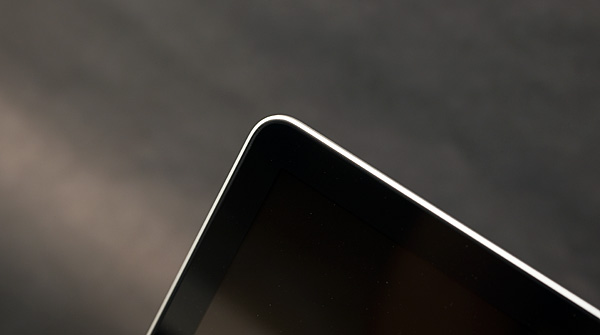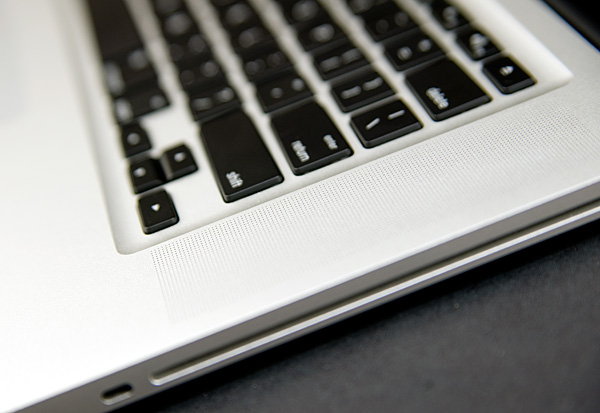Apple's 15-inch Core i5 MacBook Pro: The One to Get?
by Anand Lal Shimpi on April 14, 2010 10:38 PM EST- Posted in
- Mac
- MacBook Pro
- Arrandale
- Core i5
- Laptops
Final Words
Last year's unibody MacBook Pro update didn't do much for performance, but it did wonders for battery life. The huge increase in battery capacity meant Apple's entire pro line of notebooks could be used on cross-country flights or even during a long day of meetings without needing a recharge.
If you needed a Mac laptop at the end of last year, the 2nd gen unibody MacBook Pro was great simply because of its battery life under OS X.
The new Arrandale MacBook Pro delivers the same (or better) battery life compared to last year's model but with anywhere from 0 - 50% better performance. Apple is also offering some nice options including a higher resolution screen for the 15-inch model.

If performance matters to you, this is the MacBook Pro you've been waiting for. While I don't believe owners of the previous generation unibody need to upgrade, if you've got an older notebook this is the one to get.
The new model isn't without its drawbacks however. The most obvious of which being price. At $1799, even the cheapest 15-inch MacBook Pro is very expensive. You're paying for the design, build quality and ultimately the right to use OS X. If those things don't matter to you (particularly the OS X item) then you'd be much better off with an ASUS or Dell. The only consolation here is that the 2.4GHz Core i5 is fast enough if you thought the previous generation was quick. While I'm not sure about the 2.53GHz Core i5, the i7 is definitely worth it if you plan on keeping the machine for a while. I originally stated that I didn't believe the i7 to be worth the upgrade. Since then I managed to get my hands on an i7 system and noted its greater-than-expected performance; my conclusion has been updated to reflect that. The 22% increase in total system cost comes with a 11 - 15% increase in performance in most CPU intensive applications thanks to the extra clock speed and cache. It's a shame that this sort of performance isn't available in the 13-inch model yet, although I suspect it's related to the next point:
With a Core i5 and GeForce GT 330M, the new MacBook Pro can get uncomfortably warm under use. I found that the previous generation unibody ran cooler. Intel expects to see Arrandale power consumption go down sometime after the middle of the year with a future rev of the processor. I'm guessing that's what'll be used in the inevitable Fall update to the new MacBook Pro lineup.
Apple's inclusion of auto switching between the Intel HD Graphics and NVIDIA GeForce GT 330M is nice, however I'd still like the ability to force the GT 330M off entirely when I'd like to keep my lap cooler.
For being as forward looking of a company as it is, Apple continues to drop the ball on making a good SSD standard. Intel's X25-M G2 isn't expensive, what's stopping you Apple?

If you're curious about what's next, I have two words for you: Sandy Bridge. Due out sometime in Q1 2011, Sandy Bridge looks incredible based on early performance data. No word on when we'll see it in notebooks but if you like torturing yourself, waiting for Sandy Bridge will pay off.










114 Comments
View All Comments
yodasz - Thursday, April 15, 2010 - link
I wonder if the SSD performance and compatibility issues have been addressed in this revision? Does anybody have an update on that?Anand Lal Shimpi - Thursday, April 15, 2010 - link
3Gbps works out of the box (confirmed on Corsair's Force 100GB drive). The system seems to work fine with the SandForce controller, but the same is true for the previous gen. I haven't tried Indilinx yet. Intel also appears to work fine.Take care,
Anand
solipsism - Thursday, April 15, 2010 - link
That is the most important information from this release. Sadly, you are likely the only one to report on it.How does the use of SATA II over SATA III affect the performance of SSDs?
Anand Lal Shimpi - Friday, April 16, 2010 - link
The only SSD that can benefit from 6Gbps SATA is the Crucial/Micron RealSSD C300, which I've briefly talked about here:http://anandtech.com/show/2944
The problem today is some 6Gbps SATA controllers are actually slower than Intel's 3Gbps SATA controller:
http://anandtech.com/show/2973/6gbps-sata-performa...
Realistically I don't expect 6Gbps SATA to be that important to SSD performance until next year.
Take care,
Anand
Pat69 - Friday, April 16, 2010 - link
Do you know which kind of SSD Apple is providing through the 3 options (128, 256, 512)? Are these SSD good ones?Anand Lal Shimpi - Friday, April 16, 2010 - link
Apple doesn't like confirming this kind of stuff, but I'm guessing they are supplied by Toshiba and/or Samsung. If so, the drives are ok but not particularly great. I'd save the upgrade cost and do it yourself aftermarket.Take care,
Anand
kirkrw - Friday, April 16, 2010 - link
I take it then that your recommendation would be to that same $500 that Apple wants for their 256G SSD and put it toward a 160G x25-M gen 2?bradpowers - Monday, April 19, 2010 - link
Could we get benchmarks on the MBP with the Corsair F100? I'm very interested in that combination.stimudent - Thursday, April 15, 2010 - link
Still measuring in inches and feet...Squuiid - Thursday, April 15, 2010 - link
Aynbody know what model the 256GB SSD is?